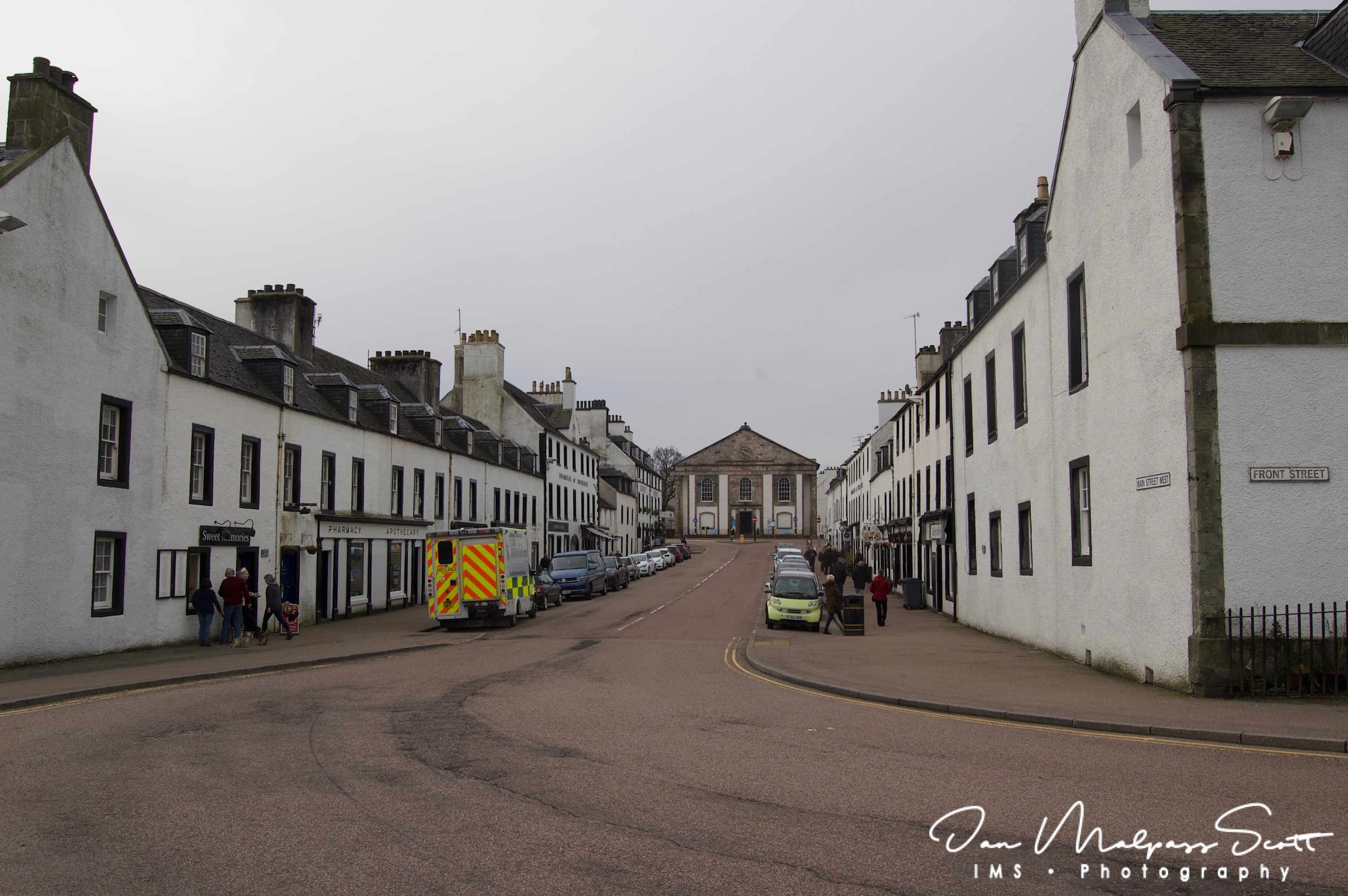Inveraray (/ˌɪnvəˈrɛəri/ or /ˌɪnvəˈrɛərə/; Scottish Gaelic: Inbhir Aora, pronounced [iɲɪɾʲˈɯːɾə]; “mouth of the Aray”) is a town in Argyll and Bute, Scotland. It is on the western shore of Loch Fyne, near its head, and on the A83 road. It is a former royal burgh, the traditional county town of Argyll, and ancestral home to the Duke of Argyll.
Coat of arms
The town’s coat of arms depicts a net cast out over the ocean, entangled in which are five herrings and the Latin motto “SEMPER TIBI PENDEAT HALEC” (possible English translation: “may a herring always hang to thee”).
Arthur Charles Fox-Davies, in his 1909 book A Complete Guide to Heraldry, notes the following:
There is no doubt of its ancient usage. …and the blazon of the coat, according to the form it is depicted upon the Corporate seal, would be for the field: “The sea proper, therein a net suspended from the dexter chief and the sinister fess points to the base; and entangled in its meshes five herrings,” which is about the most remarkable coat of arms I have ever come across.
In 1747 William Adam had drawn up plans for the creation of a new Inveraray. By 1770 little had been done, and the fifth Duke set about rebuilding the town in its present form. Some of the work on the rebuilt Inveraray was done by John Adam. The Inveraray Inn (formerly known as the New Inn, Great Inn, Argyll Arms Hotel and Argyll Hotel) on Front Street being his, as well as the Town House. Much of the rest of the town, including the church, was designed and built by the celebrated Edinburgh-born architect Robert Mylne (1733-1811) between 1772 and 1800. The end product was an attractive town which included houses for estate workers, a woollen mill, and a pier to exploit herring fishing, which was to mushroom in later years to play a major role in the town’s economy. The finished product is one of the best examples of an 18th-century new town in Scotland, and the vast majority of the properties in the centre of Inveraray are considered worthy of protection because of the town’s architectural significance.










